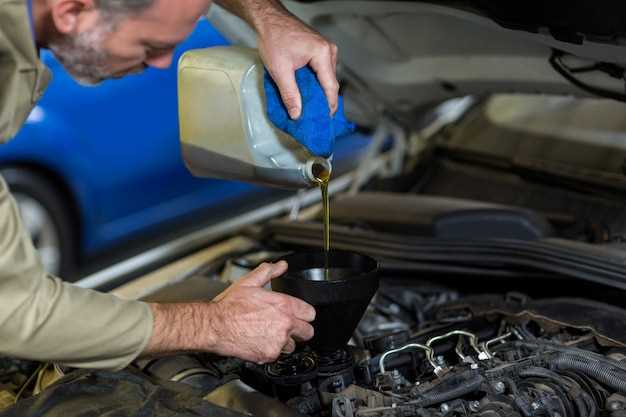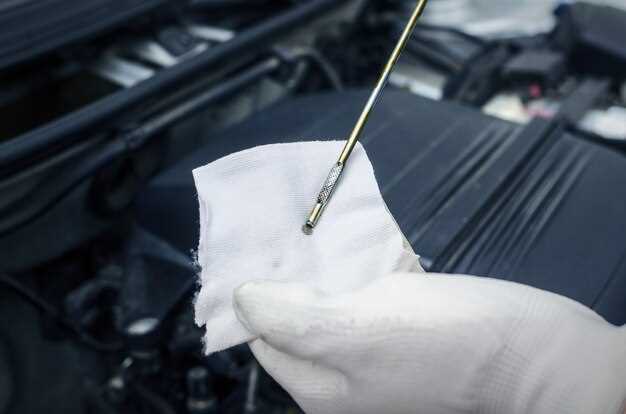
Oil leaks are a common issue faced by vehicle owners, and they can lead to significant vehicle damage if not addressed promptly. Understanding the different types of leaks and their causes is essential for maintaining the longevity and performance of your vehicle. In this article, we will explore the most frequent sources of oil leaks and provide practical repair solutions that can help you mitigate these problems.
The identification of an oil leak starts with recognizing the symptoms. A vehicle that leaves stains on the driveway or exhibits a burning oil smell may be indicating a serious issue. Common areas where leaks occur include the oil pan, gaskets, and seals, which can degrade over time due to wear and tear or extreme temperature changes. Being proactive in diagnosing these leaks not only prevents costly repairs but also enhances your vehicle’s efficiency.
Once you’ve identified a leak, the next step is to implement effective repair solutions. Depending on the severity of the leak, you may be able to apply a simple sealant or, in more severe cases, replace damaged components entirely. Understanding the nuances of your vehicle’s engine and oil system will empower you to make informed decisions regarding repairs. With the right knowledge and tools, you can tackle oil leaks head-on, ensuring a smooth and safe driving experience.
Identifying Oil Leak Sources in Your Vehicle
When it comes to maintaining your vehicle, identifying the source of an oil leak is crucial for effective diagnosis and repair. Oil leaks can arise from various components, and understanding where to look can save you time and money.
Visual Inspection: Start with a visual inspection of your engine and undercarriage. Look for puddles or spots on the ground where you typically park your vehicle. The color and consistency of the fluid can help you determine whether it’s engine oil, transmission fluid, or another type of liquid. Engine oil is typically brownish or black and has a greasy feel.
Common Leak Points: Several areas are known for potential oil leaks in vehicles. These include:
- Oil Pan Gasket: Located at the bottom of the engine, a damaged gasket can lead to significant leaks.
- Valve Cover Gasket: This gasket is located on the top of the engine. If it fails, oil may seep out, creating visible stains.
- Oil Filter: Ensure that the oil filter is properly tightened and sealed, as a loose filter can cause leaks.
- Crankshaft Seals: Front and rear crankshaft seals can wear out over time, leading to leaks.
Using Tools: Utilize tools like a flashlight and engine degreaser to help you detect leaks. Cleaning the area around suspected leaks can make it easier to spot new oil accumulation after running the engine.
Observing Symptoms: Pay attention to symptoms that may indicate a leak. If you notice a drop in oil pressure or find yourself frequently adding oil, these could signal a significant leak that requires immediate attention.
By systematically diagnosing potential leak sources, you can effectively address oil leaks and maintain the health of your vehicle.
Common Symptoms Indicating an Oil Leak
Identifying an oil leak early can save vehicle owners from costly repairs and ensure the vehicle operates efficiently. Here are some common symptoms that could indicate an oil leak:
- Visible Oil Puddles: One of the most apparent signs of an oil leak is the presence of dark puddles or spots under the vehicle. These spots often have a distinct oil smell and are typically located where the car is parked.
- Oil Warning Light: Many modern vehicles have an oil pressure warning light on the dashboard. If this light illuminates, it may indicate low oil levels due to a leak.
- Low Oil Levels: Regularly checking the oil dipstick and finding low oil levels can suggest a leak. If oil levels drop significantly between oil changes, it may be time to investigate further.
- Oil Residue on Engine Components: Inspecting the engine for oil residue or stains can reveal leaks. Check areas around the oil filter, oil pan, and valve cover gaskets for any signs of oil accumulation.
- Burning Oil Smell: If you notice a burning smell while driving, it may be due to leaked oil making contact with hot engine parts. This can produce smoke and indicates a potential leak.
- Engine Performance Issues: A drop in engine performance, such as unexpected stalling or reduced acceleration, can be linked to low oil levels from a leak. This affects lubrication and can lead to engine damage.
- Increased Engine Noise: Oil lubricates engine parts. If there is a significant leak, you may hear more engine noise due to reduced lubrication, which can indicate a potential leak.
By being aware of these symptoms, vehicle owners can take prompt action to diagnose and address oil leaks, helping to maintain the health of their engine and other components.
Tools Required for Diagnosing Oil Leaks

Diagnosing oil leaks in vehicles requires a systematic approach and the right set of tools. The following tools are essential for an effective diagnosis.
A good quality flashlight is crucial for locating hidden leaks. Oil leaks often occur in dark and hard-to-reach areas of the engine bay, making adequate lighting essential for thorough inspection.
An inspection mirror can help you view areas that are difficult to access directly. By allowing you to see around obstructions, it aids in identifying the source of the leak without disassembling components.
A mechanic’s stethoscope is useful for detecting the sound of oil leaking under pressure. This device helps pinpoint the exact location of the leak by amplifying the sound, revealing issues that may not be visible.
Fluid dye and a UV light are effective for diagnosing oil leaks. When added to the engine oil, the dye travels with the oil and can be illuminated with a UV light. This makes it easy to identify the leak’s origin.
A set of clean rags or paper towels is important for initial cleanup and diagnosis. Wiping down areas around suspected leaks can help track down the source, as clean surfaces allow you to observe fresh oil.”
Finally, a torque wrench is necessary for properly tightening areas that may be prone to leaks after repairs. Ensuring components are tightened to manufacturer specifications can prevent future oil leaks.
Step-by-Step Guide to Locating an Oil Leak
Locating an oil leak in your vehicle can save you time, money, and potential engine damage. Follow this step-by-step guide for effective diagnosis.
Step 1: Prepare Your Vehicle
Ensure your vehicle is parked on a flat surface and the engine is cool. This safety precaution allows for easy inspection without the risk of burns or injury.
Step 2: Inspect for Visible Signs
Begin by checking for visible oil leaks beneath the engine. Look for puddles or stains on the ground, which may indicate the location of the leak. Oil typically appears brown or black, often with a glossy texture.
Step 3: Examine Seals and Gaskets
Focus on common trouble areas such as the oil filter, oil pan, valve cover gaskets, and rear main seal. Inspect these components for signs of damage or wear, as they are frequently prone to leaks over time.
Step 4: Check the Oil Level
Using the dipstick, check your oil level. A significant drop may indicate a leak, and monitoring the oil level over time can provide further insights into the severity of the issue.
Step 5: Use a UV Dye
If the leak remains elusive, consider using a UV dye. Add the dye to your engine oil and run the engine for a short period. Afterward, use a UV light to illuminate any areas where the dye has escaped, highlighting the leak’s source.
Step 6: Inspect Engine Components
With the engine running, conduct a thorough inspection of engine components for any signs of oil seeping out. Pay close attention to the area around the oil filter and engine block, listening for any unusual sounds that may accompany the leak.
Step 7: Consult a Professional
If you are unable to pinpoint the leak through these diagnostic steps, consult a professional mechanic. They can conduct a more thorough examination and use advanced techniques to identify and repair the leak efficiently.
By following these steps, you can effectively diagnose and locate an oil leak, ultimately preventing further issues and ensuring your vehicle remains in good running condition.
Repairing Common Oil Leak Areas in Your Engine

Oil leaks are one of the most common issues faced by vehicle owners. Identifying the source of these leaks is crucial for maintaining engine health and performance. Proper diagnosis can save time, money, and prevent further damage to your vehicle. Below are some common areas where oil leaks typically occur and how to repair them.
1. Valve Cover Gasket: One of the primary sources of oil leaks is the valve cover gasket. Over time, this gasket can become brittle and lose its sealing properties. To repair, remove the valve cover, clean the surface, and replace the gasket with a new one. Be sure to torque the bolts evenly to avoid future leaks.
2. Oil Drain Plug: The oil drain plug can also be a culprit for leaks, especially if it is not properly tightened or if the washer is worn out. To fix this issue, drain the oil, replace the old washer with a new one, and ensure the plug is tightened to the manufacturer’s specifications. This simple diagnosis and repair can eliminate leaks easily.
3. Oil Filter: A faulty oil filter can lead to significant leaking. It’s critical to ensure the filter is installed correctly and that the O-ring is not damaged. Replacing the oil filter and checking the seal during each oil change is a proactive approach to prevent leakage.
4. Front and Rear Main Seals: These seals can wear out over time and cause oil to leak from the front or rear of the engine. While replacing these seals can be a labor-intensive task, it’s essential for stopping leaks. A thorough diagnosis will help pinpoint the exact location of the leak, and appropriate seal replacement will maintain engine integrity.
5. Camshaft and Crankshaft Seals: Similar to main seals, camshaft and crankshaft seals can also fail. If you notice oil pooling around these areas, it may indicate a need for seal replacement. Carefully remove the old seal, clean the installation area, and press in the new seal to prevent further oil loss.
In conclusion, promptly addressing oil leaks not only protects your engine but also enhances your vehicle’s longevity. A systematic approach to diagnosis and the implementation of these repair solutions will help keep your engine running smoothly.
When to Seek Professional Help for Oil Leaks
Identifying an oil leak in your vehicle can be a straightforward task, but deciding when to seek professional help requires careful consideration. If you notice a significant drop in oil levels or find oil puddles under your car, it is crucial to address the issue promptly. Small leaks may seem manageable, but they can lead to severe engine damage if ignored.
When you spot oil stains, the first step is to perform a basic diagnosis. Check for the source of the leak by examining gaskets, seals, and oil filters. If you cannot locate the leak or if it is coming from a hard-to-reach area, it is time to involve a professional. Mechanics have the expertise and tools to accurately diagnose the situation, ensuring that no potential damage goes unchecked.
Additionally, if your vehicle exhibits symptoms such as engine overheating, strange noises, or the oil pressure warning light activates, do not hesitate to seek professional assistance. These signs indicate that the leak may have resulted in more significant mechanical issues, and immediate attention is vital to prevent further complications.
For those who are unfamiliar with vehicle maintenance, or if you lack the time or resources to manage repairs, trusting a professional is advisable. Experienced mechanics can provide a thorough inspection and recommend appropriate repair solutions based on their findings. This proactive approach can save you from costly repairs down the road, making it an investment in your vehicle’s longevity.




